Chief Standing Bear
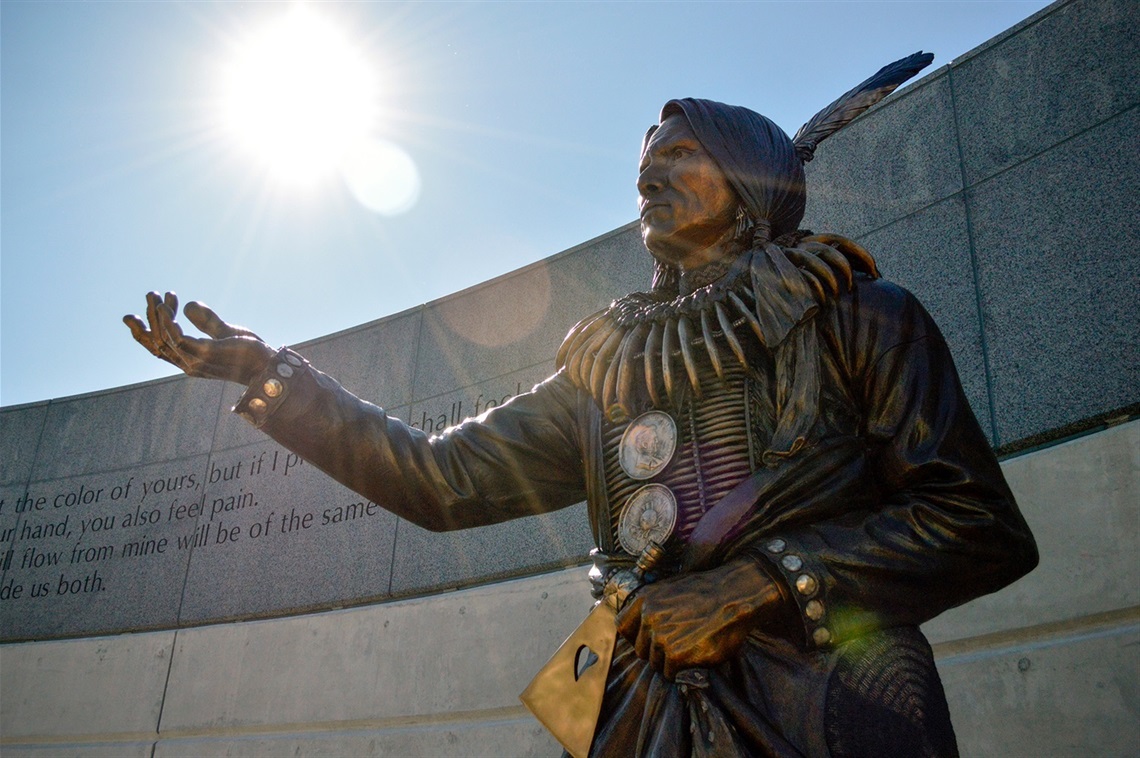
About the Sculpture
Standing on Centennial Mall between Q and R Streets, this 9 foot statue depicts Chief Standing Bear during one of the landmark moments in Nebraska History. It shows him in the courtroom scene where he stated, "I am a Man", which resulted in him being the first Native American judicially granted civil rights. Standing Bear is represented with the courage and determination that was needed to stand in a courtroom where he was not considered a person at the time.
He stands with one arm outstretched, a snapshot from the moment he asserts that he is a person like the judge. His eagle feather, signals that he is a warrior. His bear claw necklace shows his strength. He wears his two medals which were presented to tribal leaders by the US government on ceremonial occasions. The pipe tomahawk in his left hand represents the diplomatic gifts or trade by tribes.
On the wall behind the figure, is part of a quote from Standing Bear during the his infamous trial, “This hand is not the color of yours, but if I pierce it, I shall feel pain. If you pierce your hand, you also feel pain. The blood that will flow from mine will be of the same color as yours. The same God made us both. I am a Man.”
This sculpture was commissioned as part of the Nebraska sesquicentennial celebration by the Nebraska Commission on Indian Affairs, and Lincoln native Donald Campbell. Benjamin Victor of Boise, Idaho was hired as the artist for this statue. Dedicated on Sunday October 15, 2017, the program started with a performance of Native American drums and dancers.
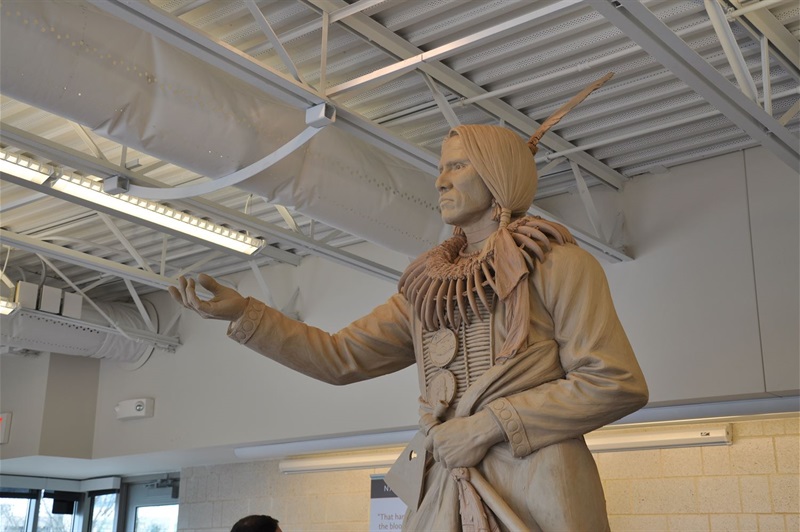
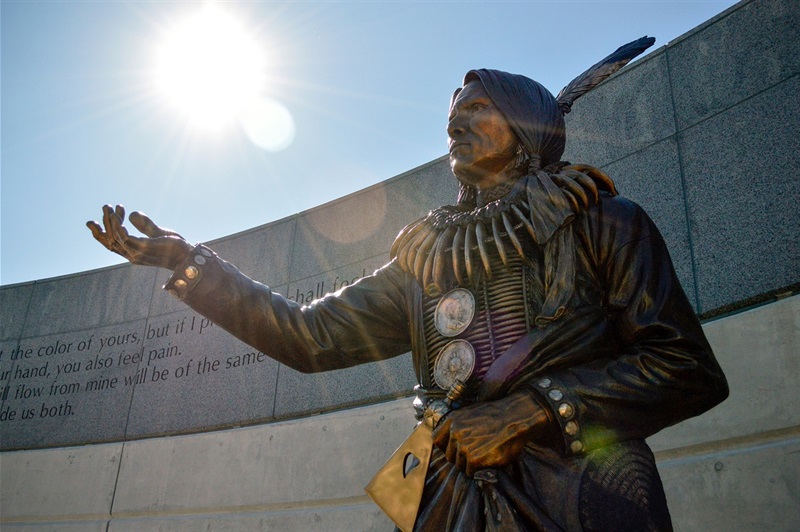
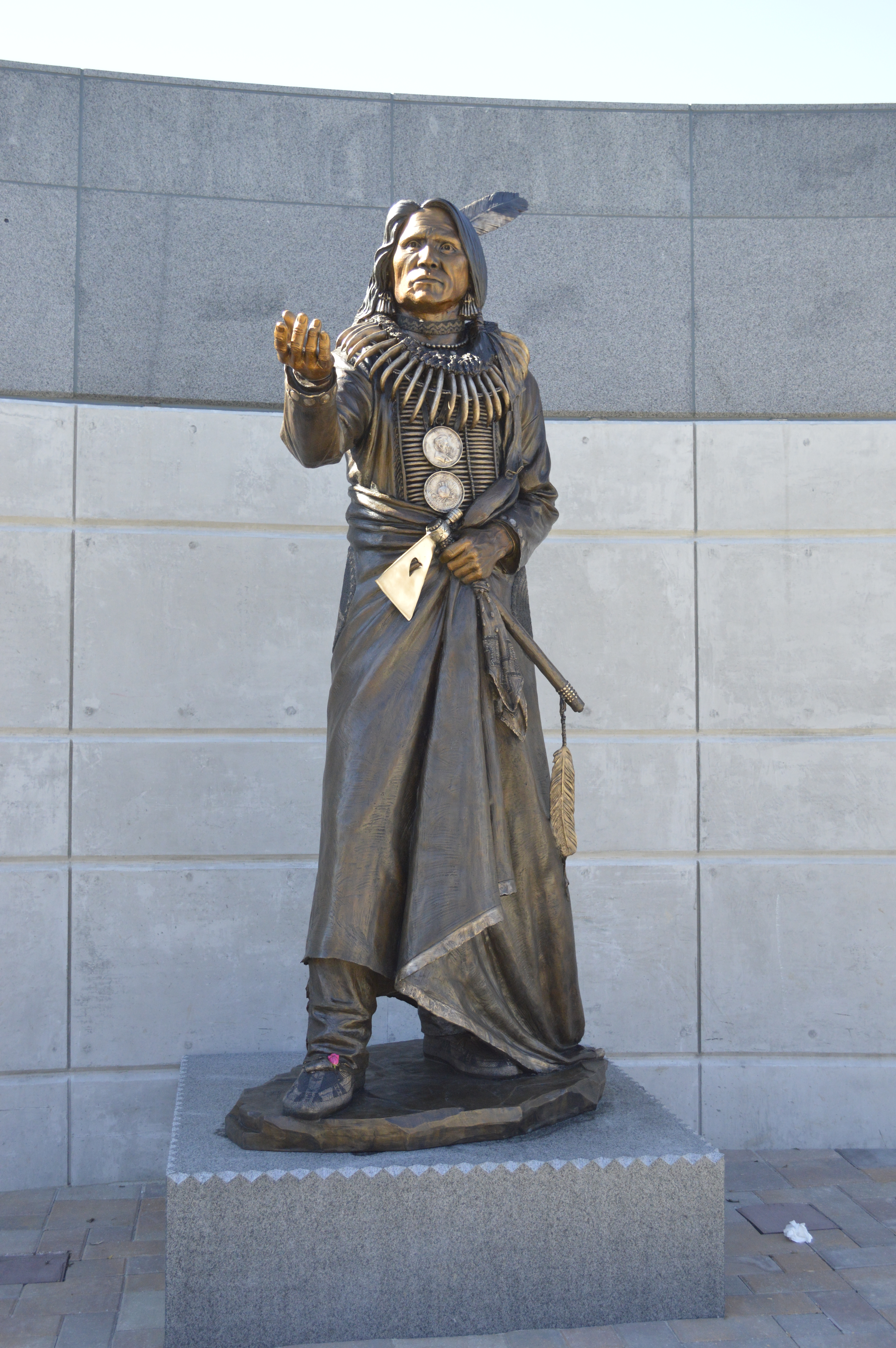
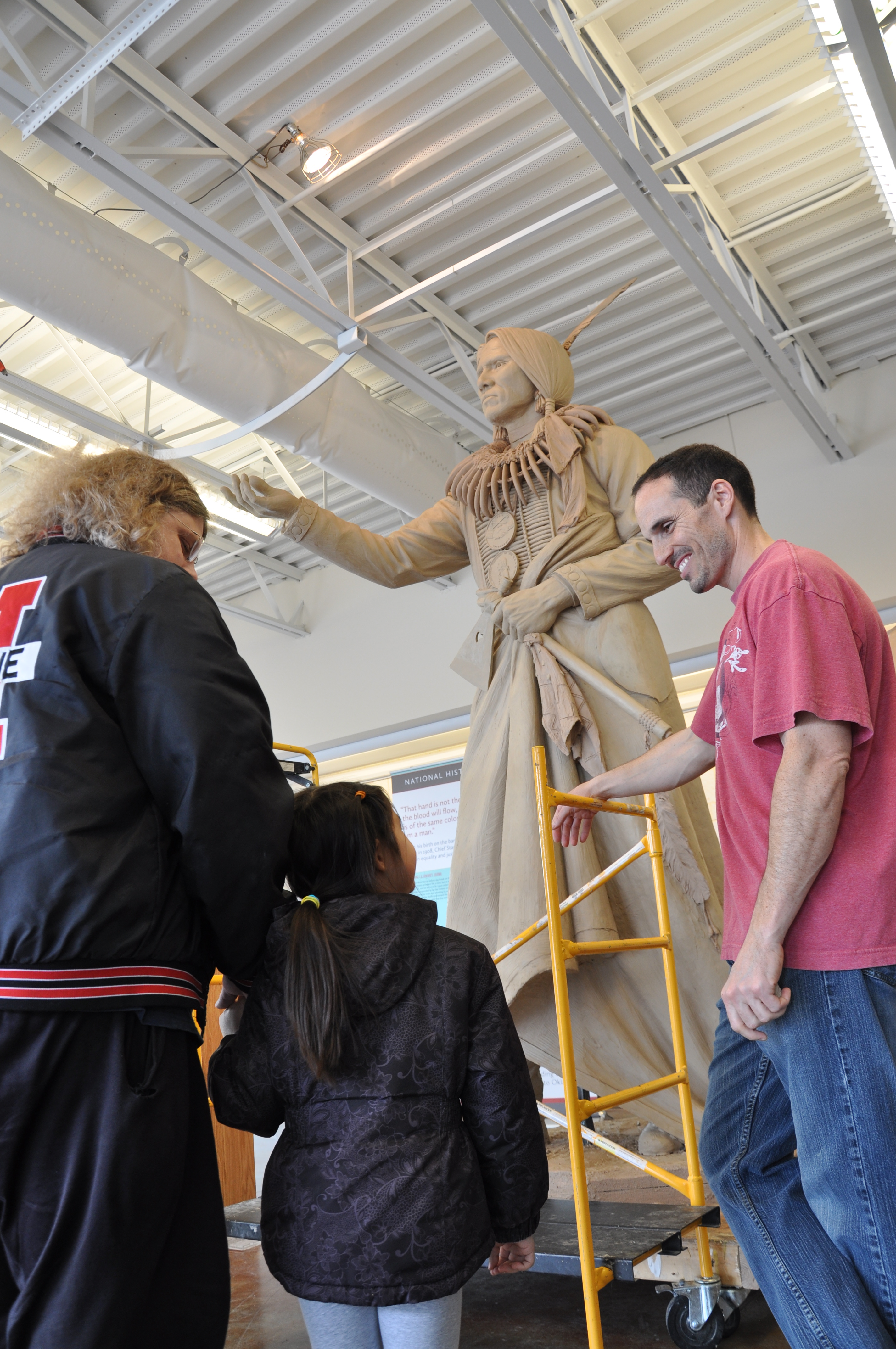
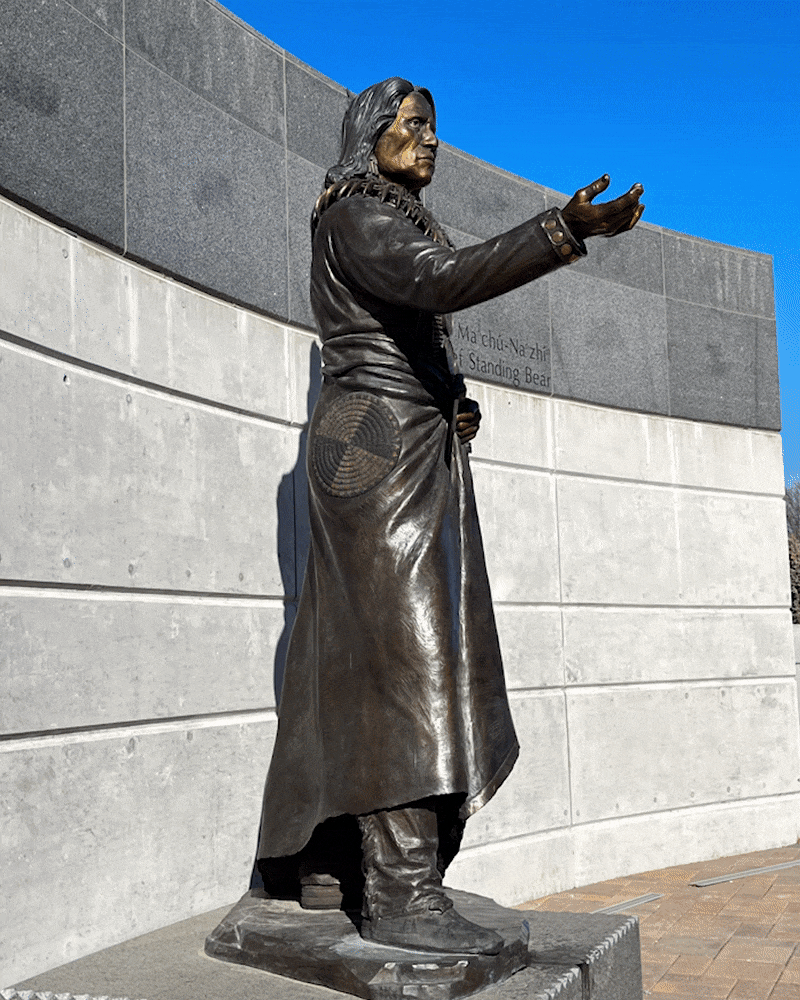
Chief Standing Bear
1829 or 1834 - September 1908
Standing Bear was born sometime between 1829 and 1834 near the Niobrara River in Nebraska. His name in the Omaha-Ponca language was Maⁿchú-Naⁿzhíⁿ or Macunajin. The Ponca tribe had been battling with the Sioux Tribe for hunting land and new settlers looking to build on new land. In 1858, the tribe sold a large portion of their land to the federal government, keeping only their settlements along the Niobrara. Due to a federal government error, their land was then traded in an agreement between the Sioux and the government, leading to the removal and relocation of the Ponca from their homeland to the Indian Territory (Oklahoma) in 1877.
The journey was harsh, and many died, including Chief Standing Bear's son, Bear Shield. To honor his son's wish of being buried in their homeland, Standing Bear and a group of other Poncas traveled back to Nebraska without approval. While in Nebraska, the troupe was arrested under the orders of Brigadier General George Crook. With help from a group of lawyers who took the case pro-bono, Chief Standing Bear filed for a writ of habeas corpus in the 1879 court case, Standing Bear vs. Crook. The trial began on May 1, 1879 before Judge Elmer Dandy. Through an interpreter, Susette (Bright Eyes) La Flesche (daughter of Omaha Chief Iron Eye and sister of Susan La Flesche Picotte) Chief Standing Bear spoke to the court, issuing his infamous statement, "... I am a Man". Judge Dandy ruled on May 12, that "an Indian is a Person" and that the Poncas be released from custody.
This was the first time that a Native American was recognized as a person in federal court.
After returning to their land on the banks of the Niobrara, Chief Standing Bear and a group of others included La Flesche traveled the eastern half of the United States recounting the trial and tribal life, and even traveled to Scotland and England in 1887. He spent the rest of his years with his tribe, and was buried in his homeland along with his ancestors and family.
Resources:
About the Sculptor Ben Victor
benjaminvictor.com
Benjamin Victor, one of the nation's leading figurative artists, was commissioned to create the piece which captures the powerful image of Chief Standing Bear in 2017. The sculpture presents the Chief as he stands in a courtroom with his right hand outstretched fighting for the freedom to return to his homeland to bury his son. Standing Bear's simple, yet powerful declaration of "I Am A Man" would echo through the annals of United States history as one of the defining moments in our nations struggles for equality and civil rights.
At 26, Victor became the youngest artist ever to have a sculpture in the National Statuary Hall, when his sculpture of Native activist Sarah Winnemucca was installed in the U.S. Capitol. Nine years later, he became the only living artist to have three works in the hall, including statues of Sarah Winnemucca, 2005 and Dr. Norman Borlaug, 2014.
Additional Information
Height: appr. 10 ft.
Other articles about the sculpture:
Location
Centennial Mall N, Lincoln 68508 View Map
40.815283, -96.699742
Centennial Mall N ,
Lincoln 68508
Centennial Mall N ,
Lincoln 68508
Chief Standing Bear